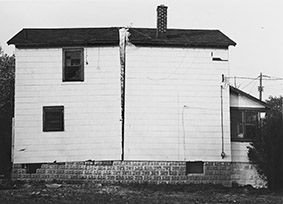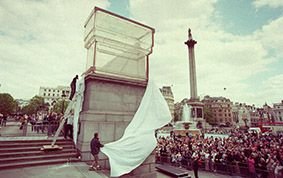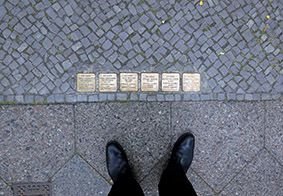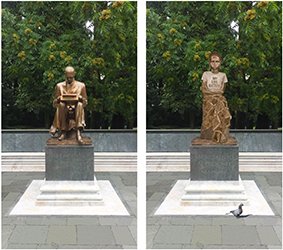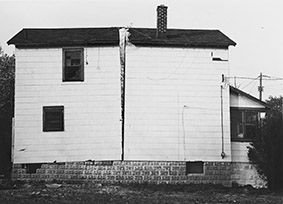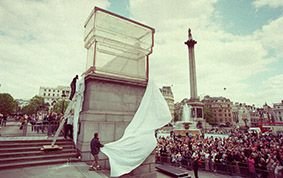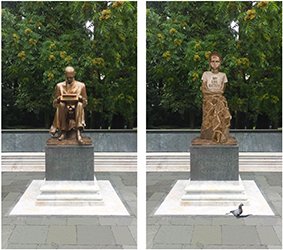Nonumento
Un paradosso della memoria
We entrust our memories to monuments so that they might preserve them for us. Hence we can afford to forget them. This is the paradox of the memorial: built as an aid to remembrance, it becomes the opposite, a machine of forgetting. Contemporary monumental art has racked its brains to find a remedy for this pathology. The 1960s saw the formation of a heterogeneous, often radical and contradictory movement of artists involved in the design of “counter-monuments” or “anti-monuments”. Devices that use negative means to make us profoundly question our paradoxical relationship with memory and forgetting. Andrea Pinotti borrows Gordon Matta-Clark’s term “non-uments”, which he translates as nonumenti, of which he offers both a grammar and typology.
But does the “non-ument” really do any better than the monument? Does a parallelepiped or a fountain that disappears into the ground really help our forgetfulness more than a proudly erect, stubbornly vertical obelisk or column? Does a performance or reenactment lasting a few minutes or hours do a better job than a mausoleum firmly planted where it has stood for centuries? Do air, light, colours and bits truly save us from amnesia more than stone, bronze or iron?
Today these questions have become more pressing than ever: the memorial is a red hot issue again, just when efforts are being made in several quarters to demolish as many as possible. At a time when statues are being dumped in landfills as a consequence of the wave of iconoclastic violence inspired by cancel or woke culture, this book proposes an aesthetic and political reflection on contemporary monumental art and the contradiction that besets it: denying the monument, in order to reaffirm it, and making the “non-ument”.
But does the “non-ument” really do any better than the monument? Does a parallelepiped or a fountain that disappears into the ground really help our forgetfulness more than a proudly erect, stubbornly vertical obelisk or column? Does a performance or reenactment lasting a few minutes or hours do a better job than a mausoleum firmly planted where it has stood for centuries? Do air, light, colours and bits truly save us from amnesia more than stone, bronze or iron?
Today these questions have become more pressing than ever: the memorial is a red hot issue again, just when efforts are being made in several quarters to demolish as many as possible. At a time when statues are being dumped in landfills as a consequence of the wave of iconoclastic violence inspired by cancel or woke culture, this book proposes an aesthetic and political reflection on contemporary monumental art and the contradiction that besets it: denying the monument, in order to reaffirm it, and making the “non-ument”.
Textual index
Introduzione – Un refuso della memoria
Parte I – Il monumento: un Proteo inafferrabie
I.1. Monumento, monumentale, monumentalità, monumentalismo
Tutto è monumento, nulla è monumento
Monumentale: quando le dimensioni contano
Monumentalità: alla ricerca della comunità perduta
Monumentalismo: una brutta parola?
I.2. Ripartire dall’origine
Presente assenza
La memoria? Una traccia
Dall’engramma all’esogramma
Le tre ritenzioni
Dall’icnologia all’icnolatria
I.3. Il monumento è nell’occhio di chi guarda?
Monumento/documento
Un conflitto di valori
Entmerken
Memoria vs promemoria
Parte II – Dal monumento al nonumento
II.1. Perì Bathous
II.2. Immergenti
II.3. Invisibili
II.4. Effimeri
II.5. Atmosferici
II.6. Aumentati
II.7. Performativi
II.8. Interattivi
II.9. Riappropriati
II.10. Intransitivi
Conclusioni – Il nonumento come paradosso critico
Parte I – Il monumento: un Proteo inafferrabie
I.1. Monumento, monumentale, monumentalità, monumentalismo
Tutto è monumento, nulla è monumento
Monumentale: quando le dimensioni contano
Monumentalità: alla ricerca della comunità perduta
Monumentalismo: una brutta parola?
I.2. Ripartire dall’origine
Presente assenza
La memoria? Una traccia
Dall’engramma all’esogramma
Le tre ritenzioni
Dall’icnologia all’icnolatria
I.3. Il monumento è nell’occhio di chi guarda?
Monumento/documento
Un conflitto di valori
Entmerken
Memoria vs promemoria
Parte II – Dal monumento al nonumento
II.1. Perì Bathous
II.2. Immergenti
II.3. Invisibili
II.4. Effimeri
II.5. Atmosferici
II.6. Aumentati
II.7. Performativi
II.8. Interattivi
II.9. Riappropriati
II.10. Intransitivi
Conclusioni – Il nonumento come paradosso critico
Nonumento


